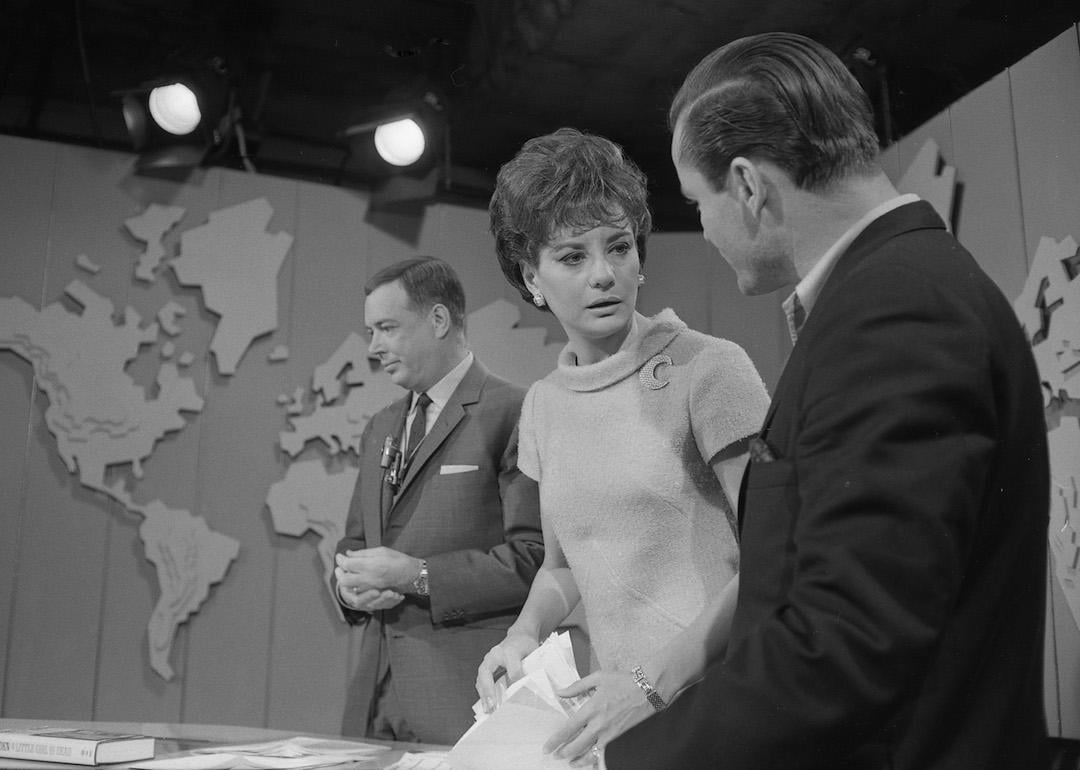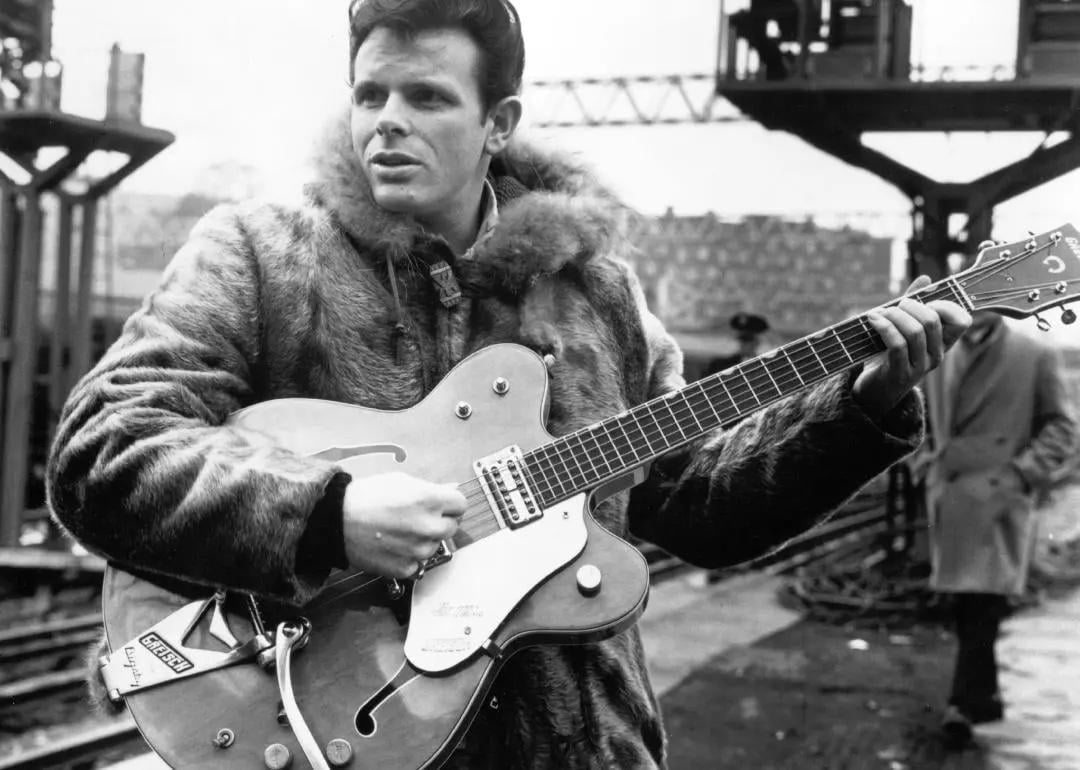
#1 rock songs of the 1960s
The 1960s marked an unquestionable evolution—and revolution—in rock music. The British Invasion made its mark in this decade, with bands like the Beatles and the Rolling Stones, who were inspired by American artists like Little Richard and Chuck Berry. They, along with their American counterparts, the Beach Boys, incorporated catchy melodies and lyrics to redefine pop music. These bands became more experimental later on, joining groups like Jefferson Airplane and Pink Floyd that incorporated psychedelic experiences in their music.
In the second half of this epic decade in rock came poetic lyrics from Jim Morrison of the Doors, boundary-pushing stage performances from guitarists like Jimi Hendrix, and social activism from folk-rock artists like Bob Dylan. These elements culminated in Woodstock in 1969, encapsulating the decade's fusion of social and music evolution. Nearly half a million people drove to upstate New York to revel in this now-legendary event held at the cusp of another new decade. Concertgoers sat through three days of rain and lightning to see an all-star lineup including, but not limited to, the Who, Jefferson Airplane, Joan Baez, the Grateful Dead, and Sly and the Family Stone, setting a blueprint for festivals dominating the music industry today.
With so many influential tracks from this time period, Stacker looked at the biggest #1 rock songs of the 1960s that topped the Billboard Hot 100 for three weeks or more, then filtered it down to the rock genre, according to MusicBrainz, an open music encyclopedia via the University of Waterloo.
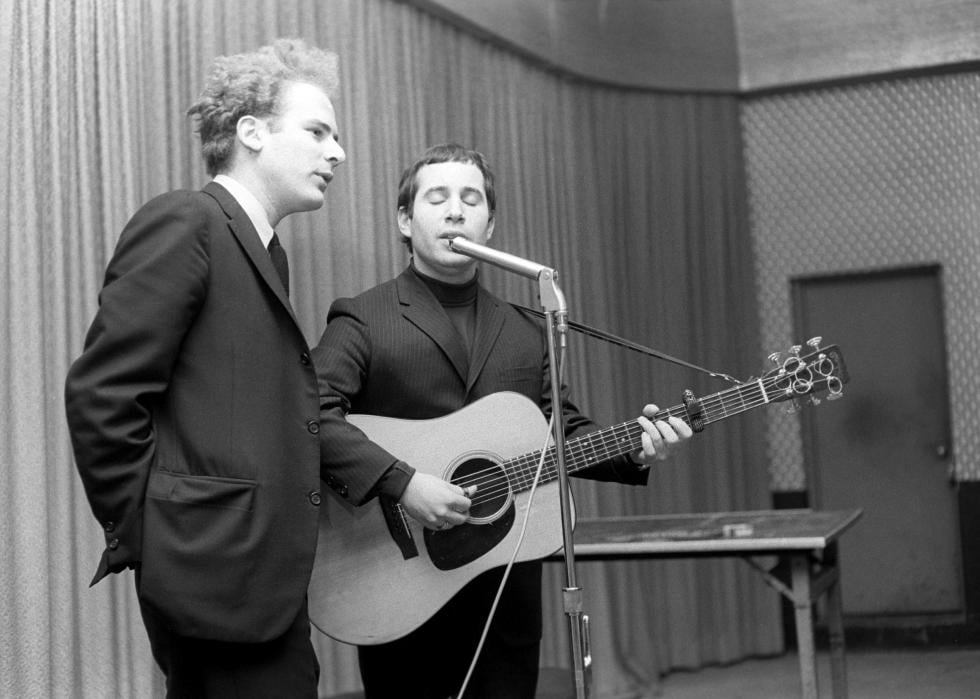
Mrs. Robinson
- Artist: Simon & Garfunkel
- Date entered at #1: June 1, 1968
- Weeks at #1: 3
Not only is "Mrs. Robinson" one of Simon & Garfunkel's most notable songs, it became synonymous with the 1968 classic film "The Graduate." The catchy melody and lyrics won the duo their first two Grammys for Record of the Year and Best Contemporary Pop Performance—Duo or Group. According to the Grammys, "Mrs. Robinson" also made history as the first rock song to win Record of the Year. Before splitting in 1970, Simon & Garfunkel produced numerous hits like "Cecilia," "The Sound of Silence," and "Bridge Over Troubled Water."
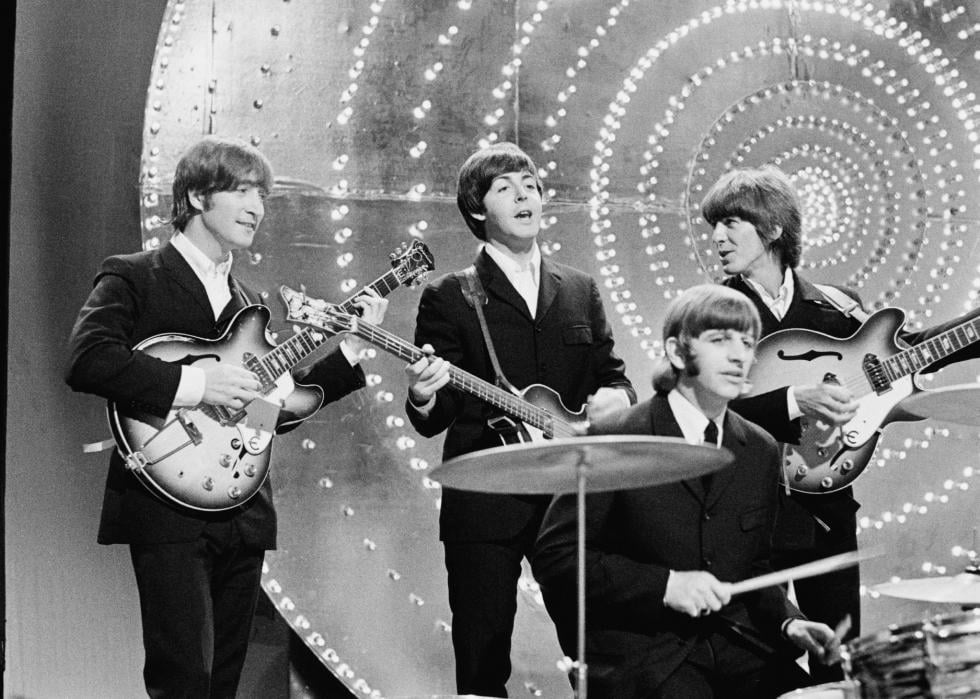
Hello, Goodbye
- Artist: The Beatles
- Date entered at #1: Dec. 30, 1967
- Weeks at #1: 3
Released as a non-album single in 1967, "Hello, Goodbye" became the Beatles' 15th #1 hit. The song leaves fans polarized—while some praise the pop single, others say it put them on the path to a breakup. Lennon was reportedly disheartened that "Hello, Goodbye," written by McCartney, was chosen as the A-side of their single, while his "I Am the Walrus" was relegated to the B-side.
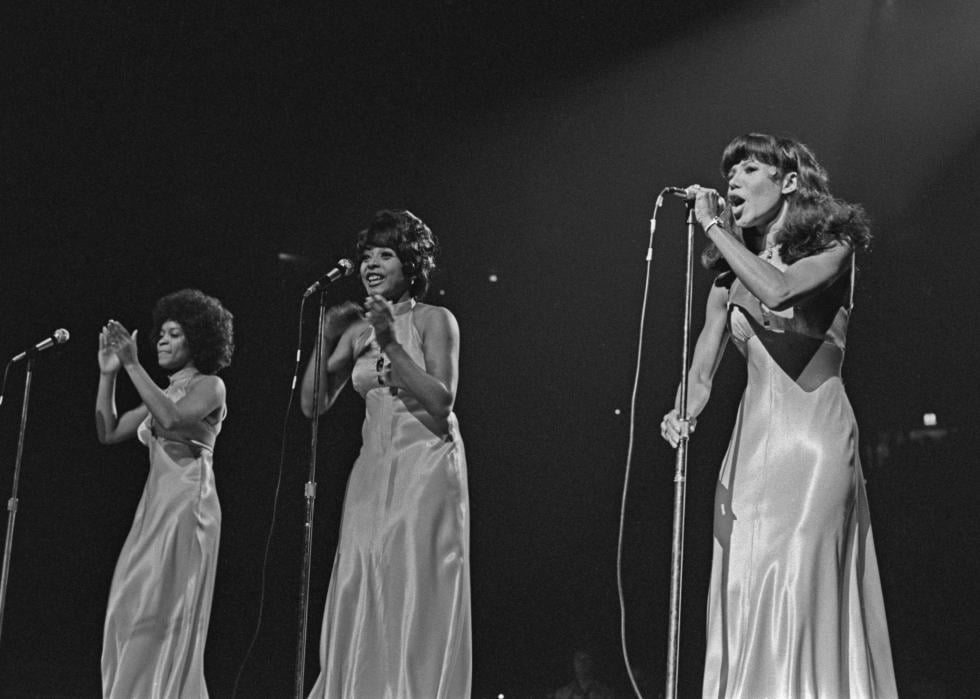
Soldier Boy
- Artist: The Shirelles
- Date entered at #1: May 5, 1962
- Weeks at #1: 3
"Soldier Boy" is written from the point of view of a woman who promises to stay loyal to her boyfriend, who has gone off to war. It's one of the many Brill Building songs that dominated the charts in the late '50s and early '60s. The Shirelles went on to have multiple hits and were inducted into the Rock & Roll Hall of Fame in 1996.
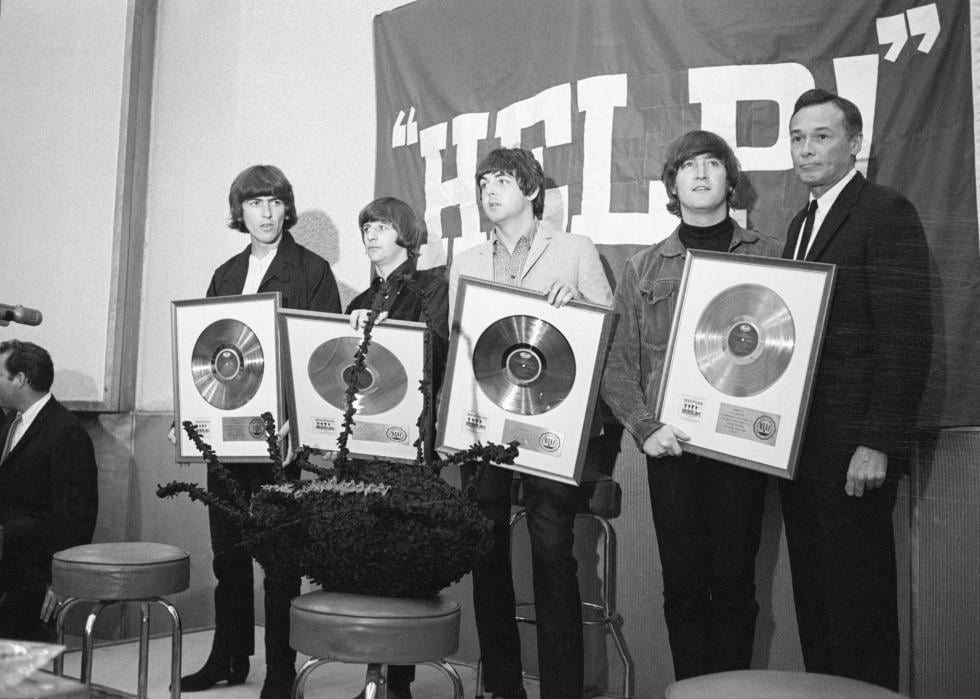
Help!
- Artist: The Beatles
- Date entered at #1: Sept. 4, 1965
- Weeks at #1: 3
From the same-titled album and movie, "Help!" showed the band's struggle with fame. Written primarily by John Lennon, he considered it among his favorite Beatles songs. It demonstrated the group's willingness to dive deep into their emotions, which became a more prominent theme in future work.
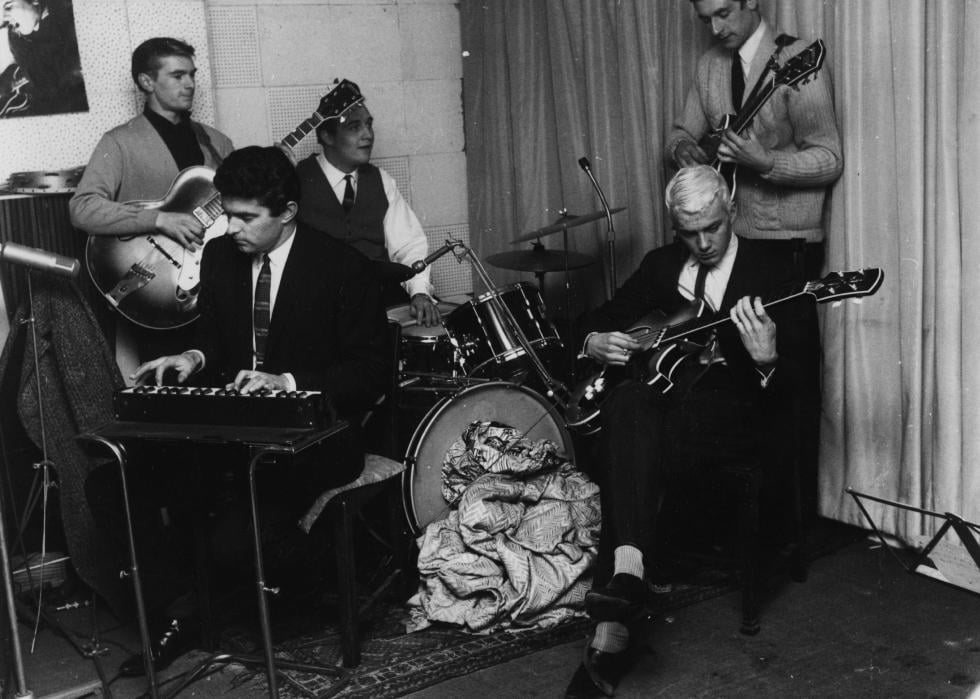
Telstar
- Artist: The Tornados
- Date entered at #1: Dec. 22, 1962
- Weeks at #1: 3
Named after a telescope, "Telstar" was one of the first examples of electronic rock music. The use of synthesizers and futuristic sounds set a foundation of experimental rock for bands like Pink Floyd and King Crimson. Tornados leader Joe Meek couldn't collect royalties from the single, as a plagiarism lawsuit blocked him until he died in 1967.
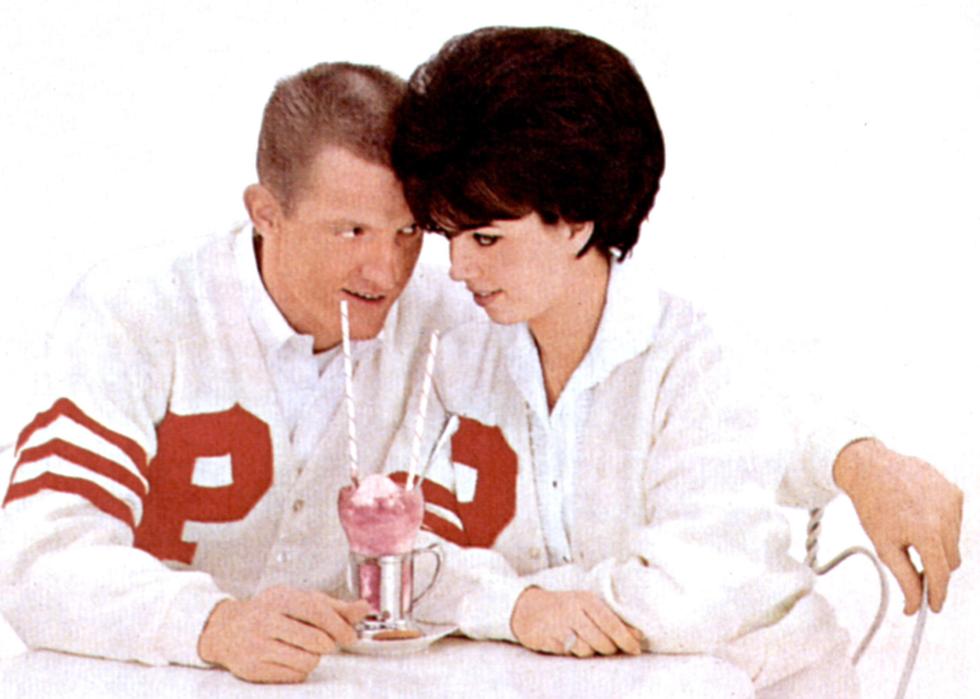
Hey Paula
- Artist: Paul & Paula
- Date entered at #1: Feb. 9, 1963
- Weeks at #1: 3
Paul & Paula hit the top of the charts with their first single, "Hey Paula," a ballad about a young couple's relationship. The conversational tune made it a memorable example of '60s ballads. Ray Hildebrand (Paul), who died in 2023, had decided to step away from the limelight, while Jill Jackson (Paula) still performs.
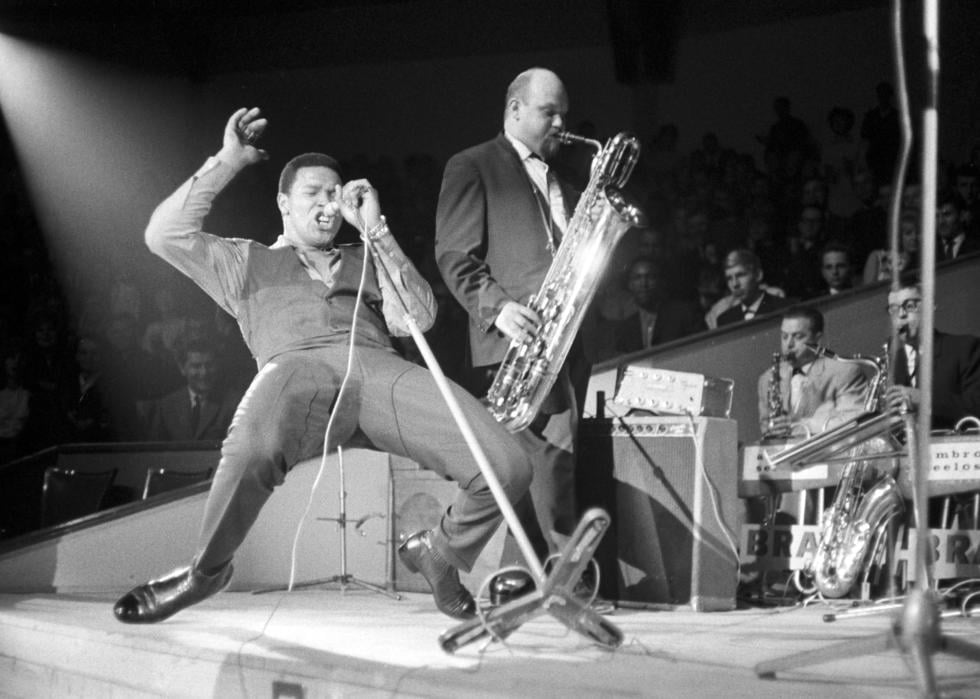
Pony Time
- Artist: Chubby Checker
- Date entered at #1: Feb. 27, 1961
- Weeks at #1: 3
Capitalizing on the dance craze he started with "The Twist," Chubby Checker released "Pony Time." Its explicit instructions were unique for a dance song. It was originally written by Don Covay and John Berry to be performed by the former, but Checker's version established him as a dance floor icon. The dance it inspired—known as "The Pony"—became so iconic that it was mentioned in numerous songs since: later in the '60s with Wilson Pickett's song "Land of a Thousand Dances," in Nick Lowe's '70s song "I Knew the Bride," and in The Go-Go's '80s hit "We Got the Beat."
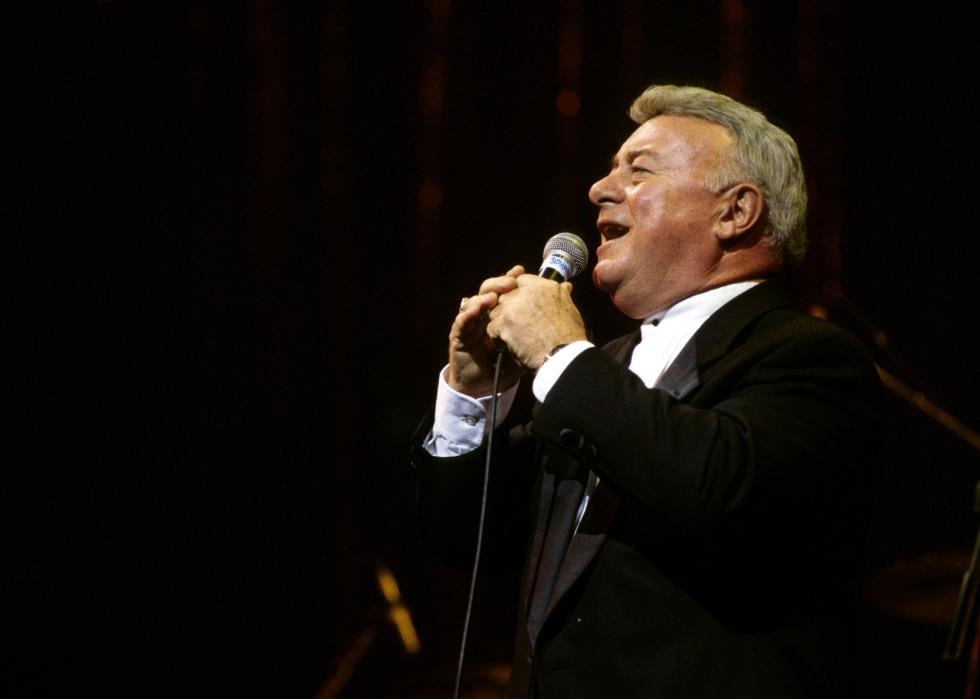
Running Bear
- Artist: Johnny Preston
- Date entered at #1: Jan. 18, 1960
- Weeks at #1: 3
Johnny Preston's "Running Bear" was written by his friend Jiles Perry Richardson, best known as "The Big Bopper." Though one of the most notable rockabilly songs, it's often criticized for appropriating tribal war chants throughout the song.
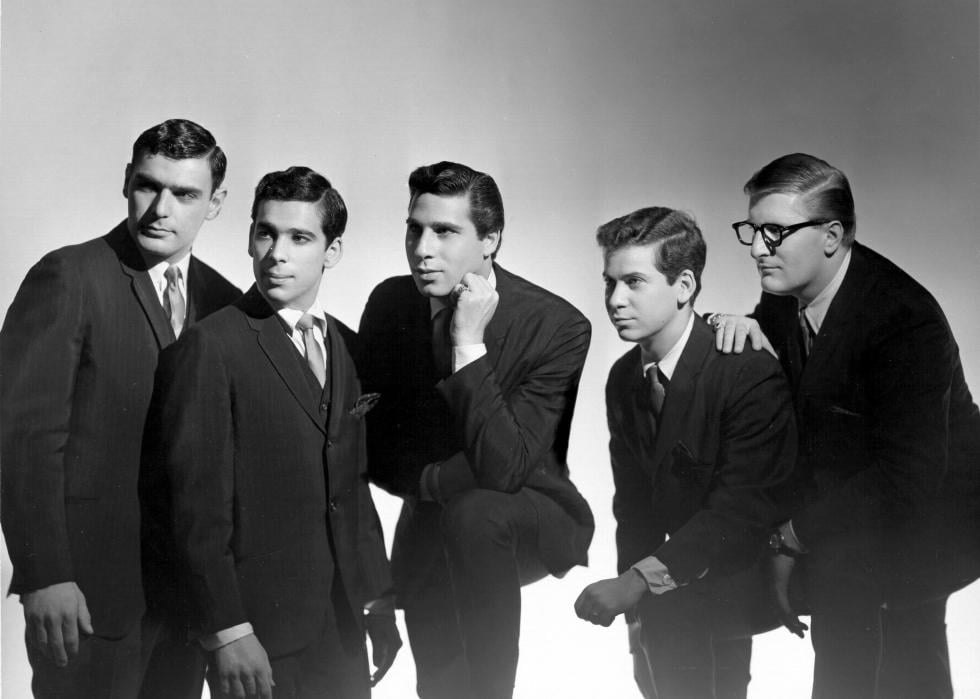
The Lion Sleeps Tonight
- Artist: The Tokens
- Date entered at #1: Dec. 18, 1961
- Weeks at #1: 3
Although "The Lion Sleeps Tonight" was a sleeper hit in the United States, many younger audiences will recognize it from "The Lion King" soundtrack. It's an English adaptation of "Mbube," a Zulu song written and performed by Solomon Linda. The artist's estate fought American publishers for years to earn royalties for the song.
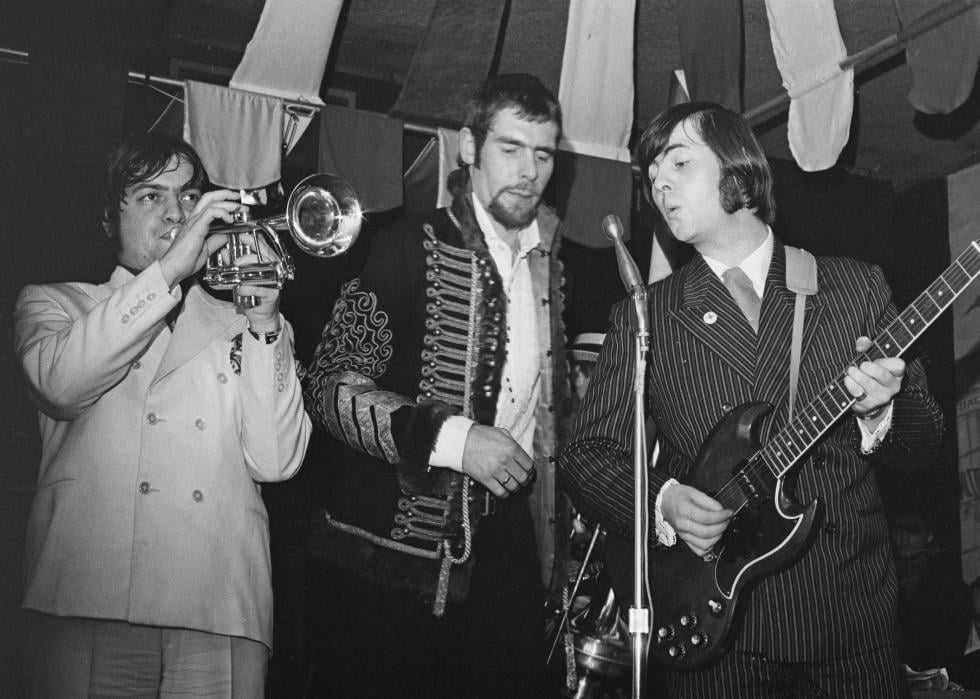
Winchester Cathedral
- Artist: The New Vaudeville Band
- Date entered at #1: Dec. 3, 1966
- Weeks at #1: 3
Coming from the British Music Hall era, "Winchester Cathedral" was performed by the New Vaudeville Band, formed by songwriter Geoff Stephens for the sole purpose of recording this song. It won a Grammy for Best Contemporary Rock & Roll Recording in 1967, but many question if it's a true rock 'n' roll song.
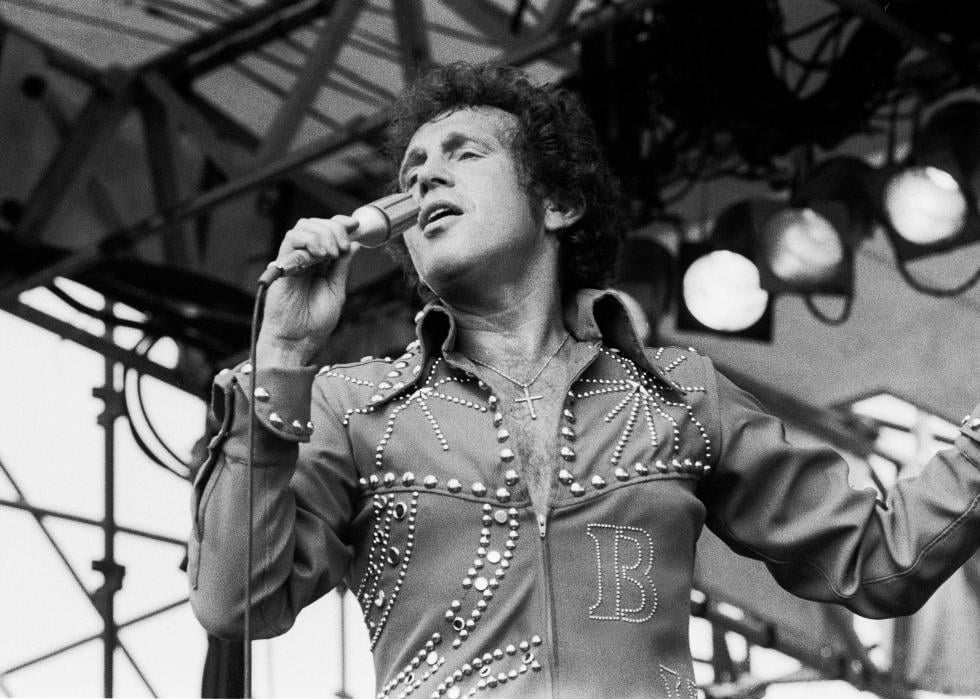
Blue Velvet
- Artist: Bobby Vinton
- Date entered at #1: Sept. 21, 1963
- Weeks at #1: 3
"Blue Velvet" was originally written and composed by Bernie Wayne and Lee Morris in 1950 and recorded by Tony Bennett in 1951, but it became a #1 hit when Bobby Vinton sang it in 1963. It's been covered multiple times, most recently by Lana Del Rey in 2012. Though this was his biggest hit, Vinton continued to have success as a musician and actor throughout his career.
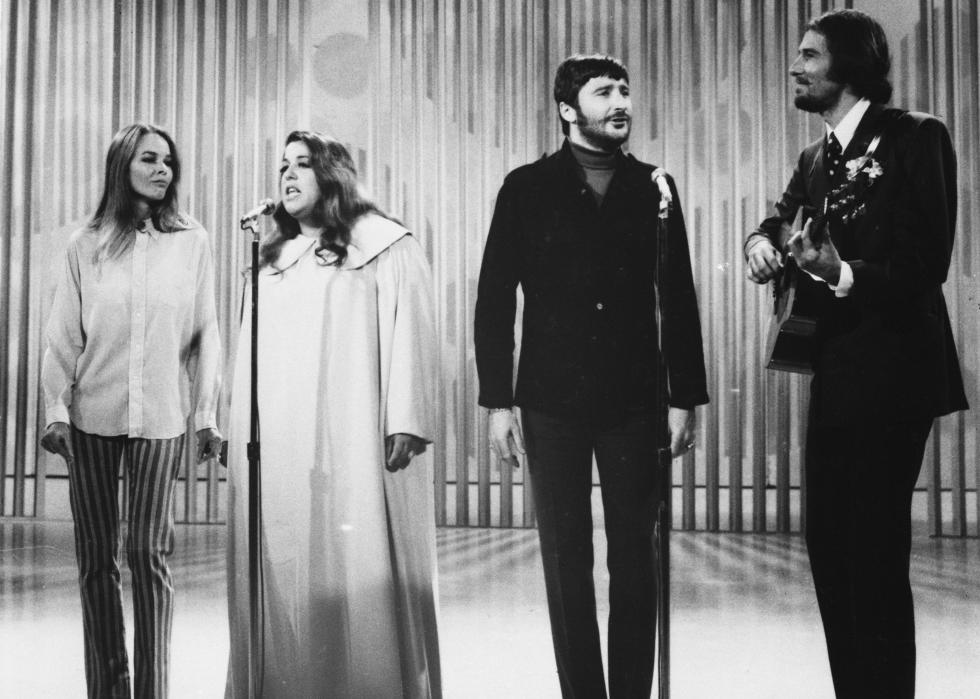
Monday, Monday
- Artist: The Mamas & the Papas
- Date entered at #1: May 7, 1966
- Weeks at #1: 3
An anthem of Southern California's Laurel Canyon era, "Monday, Monday" was a hallmark of folk-rock music. The lyrics describe the complexities of daily life and the relationships that come with them. Not only did this song win a Grammy, but it also provided a snapshot of life in the late '60s in Southern California. "Monday, Monday" was also the group's only song to hit #1 on the Billboard Hot 100 chart.
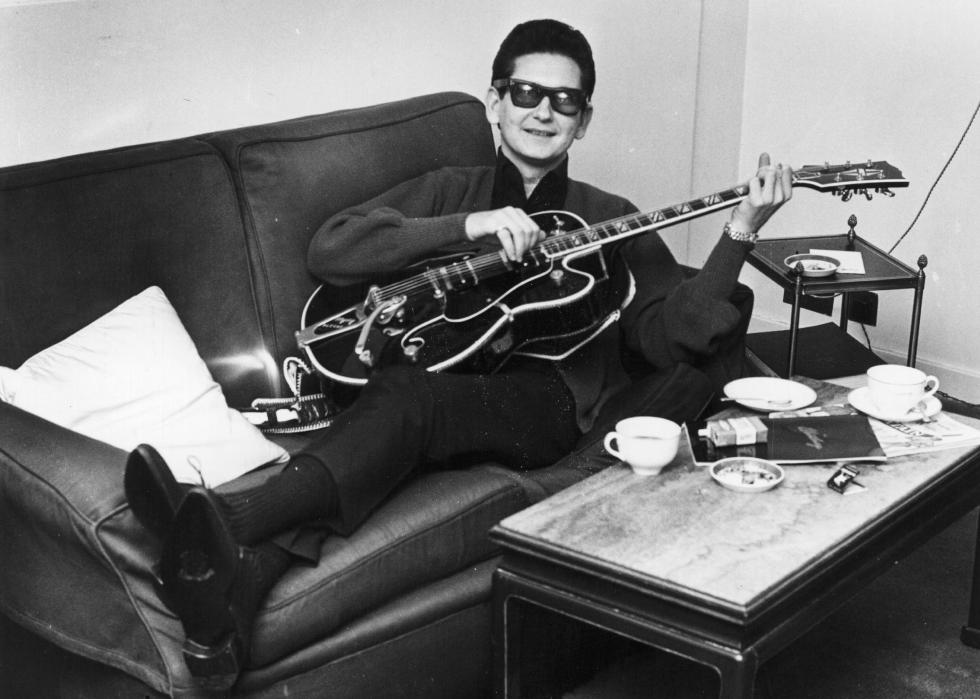
Oh, Pretty Woman
- Artist: Roy Orbison and the Candy Men
- Date entered at #1: Sept. 26, 1964
- Weeks at #1: 3
Recognized for its catchy guitar intro, "Oh, Pretty Woman" is singer Roy Orbison's best-known song. It posthumously won Orbison a Grammy in 1991 for Best Pop Vocal Performance by a man, with its pop culture impact going far beyond Orbison—it became popular again in 1990 as part of the "Pretty Woman" film soundtrack.
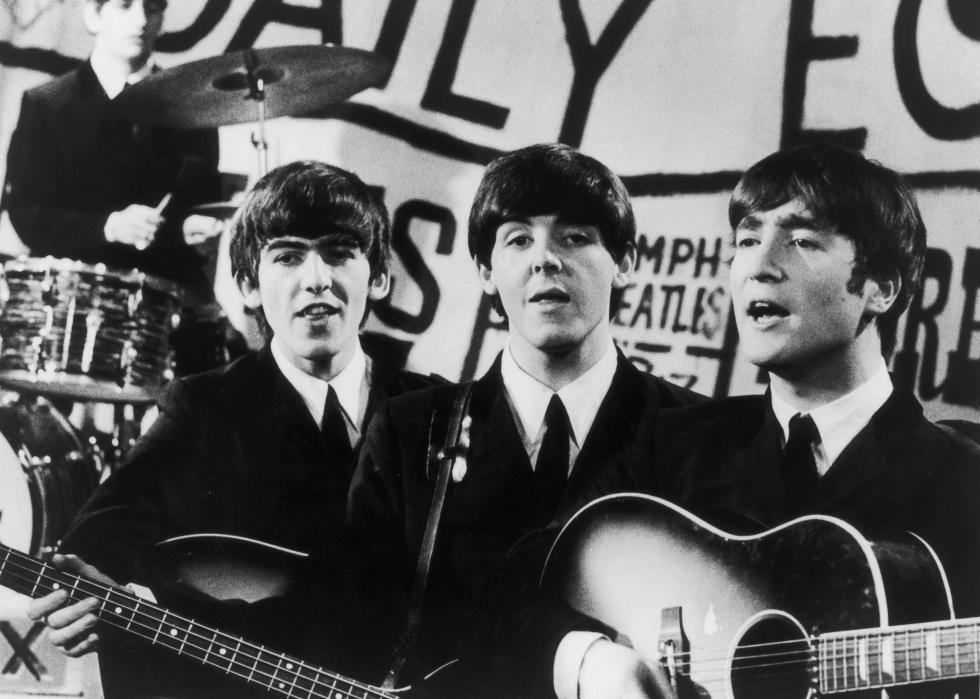
I Feel Fine
- Artist: The Beatles
- Date entered at #1: Dec. 26, 1964
- Weeks at #1: 3
"I Feel Fine" made history in 1964 as the first song to intentionally incorporate guitar feedback in a song. Inspired by song riffs by Bobby Parker and Ray Charles, the song was written by John Lennon between takes of "Eight Days a Week" and was released as an A-side to "She's a Woman," becoming the group's sixth #1 single that year.
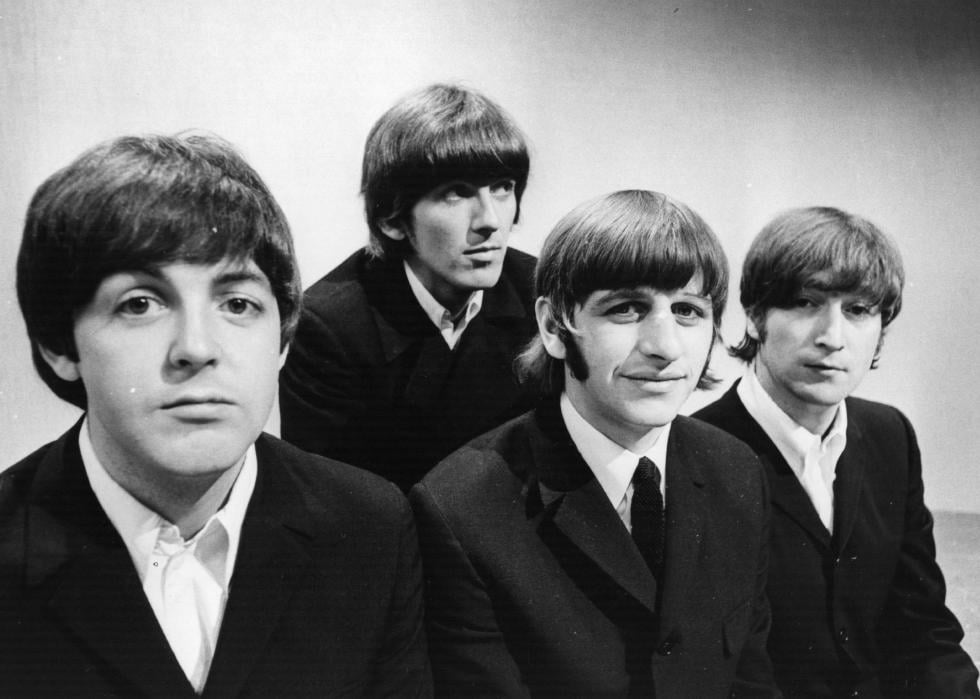
We Can Work It Out
- Artist: The Beatles
- Date entered at #1: Jan. 8, 1966
- Weeks at #1: 3
Released in 1965 as a double A-side single with "Day Tripper," "We Can Work It Out" is a true John Lennon-Paul McCartney collaboration, with McCartney's optimistic verses contrasting with Lennon's realistic chorus. It's a popular cover, most notably performed by Stevie Wonder, whose 1971 rendition reached #13 on the Billboard Hot 100.
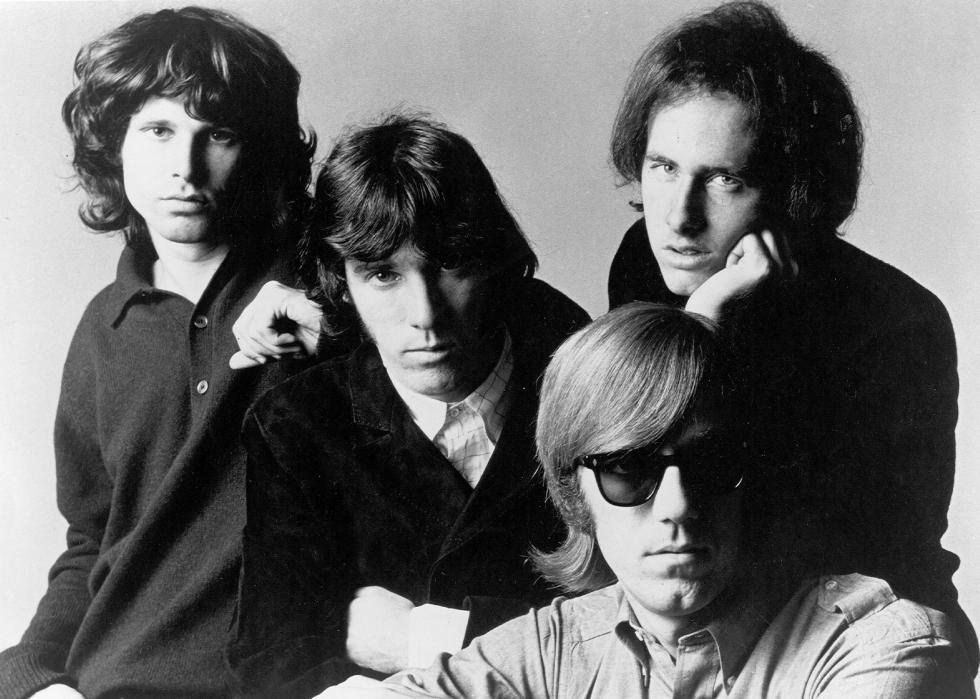
Light My Fire
- Artist: The Doors
- Date entered at #1: July 29, 1967
- Weeks at #1: 3
"Light My Fire" is one of the most familiar songs of the psychedelic rock era. As the Doors' second single, it became their highest charting hit. Alongside its lyrical content and delivery by frontman Jim Morrison, it's noted for its structure, with a piano intro and solo by Ray Manzarek. Though Morrison died in 1971, and the group disbanded in 1973, Morrison's lyrics inspired a new generation of rock stars.
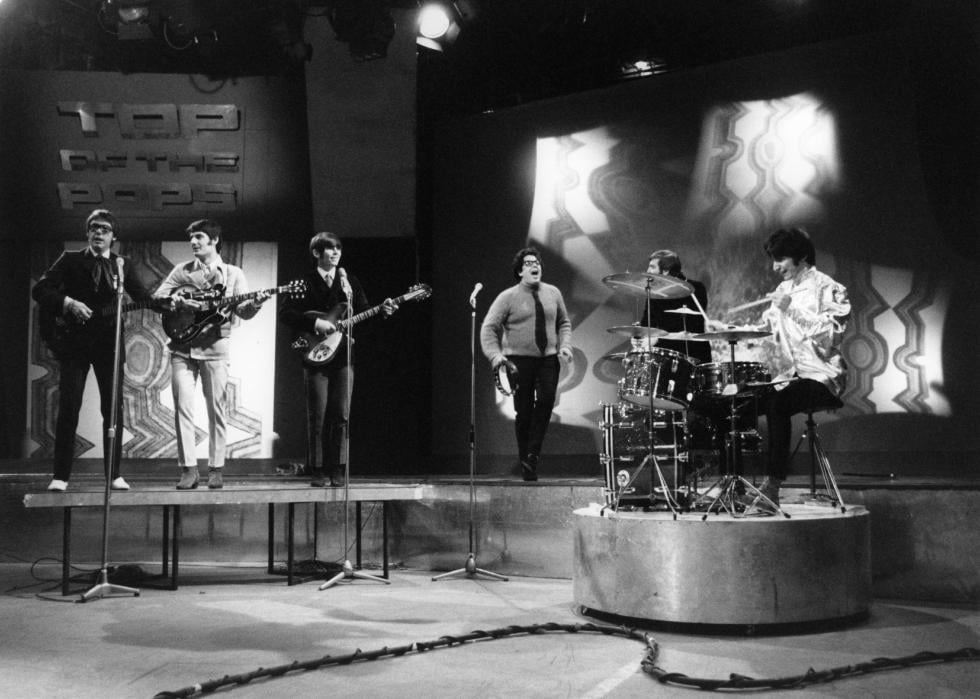
Happy Together
- Artist: The Turtles
- Date entered at #1: March 25, 1967
- Weeks at #1: 3
"Happy Together" became the Turtles' first and only chart-topper. Similar in spirit to the love songs performed by boy bands earlier in the decade, it slices in some folk and psychedelic elements that were emerging at that time. The group had a few more Top 40 hits before their dissolution in 1970. The legacy of "Happy Together" has lasted far beyond the 1960s—it's been featured in more recent examples of pop culture from a 1999 Nintendo 64 commercial to the critically acclaimed 2002 film "Adaptation."
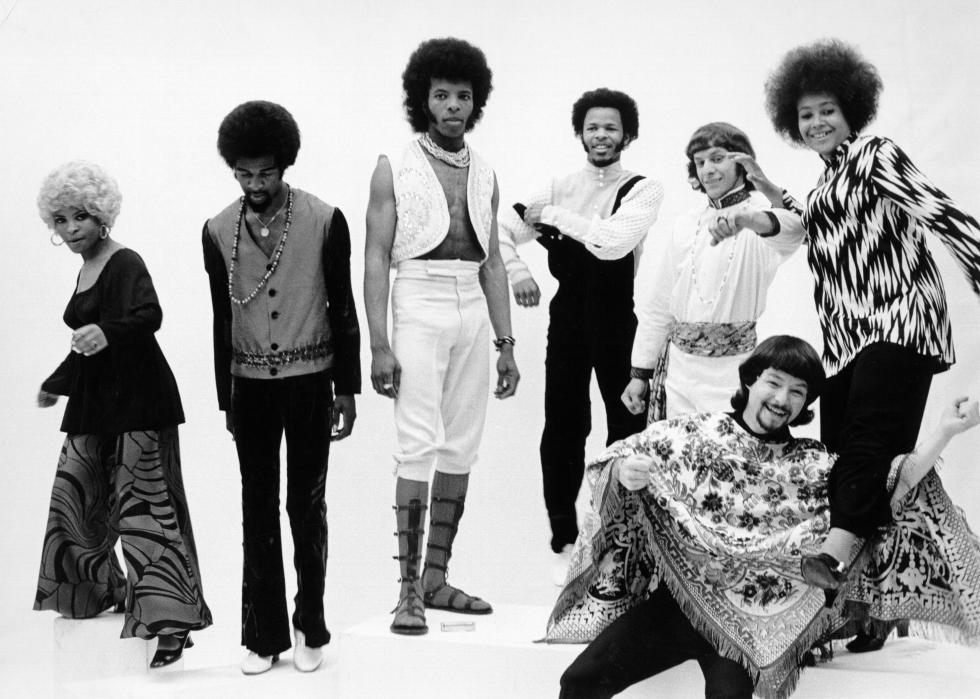
Everyday People
- Artist: Sly and the Family Stone
- Date entered at #1: Feb. 15, 1969
- Weeks at #1: 4
Sly and the Family Stone's impact on popular music can't be unstated, and their 1969 hit "Everyday People" is no different, becoming an anthem of unity. The song was one of the first to combine funk, rock, and soul elements. In addition to sitting atop the Billboard Hot 100 for a month, "Everyday People" also spent two weeks at the #1 spot on Billboard's Hot R&B/Hip-Hop Songs chart, proving its reach across genres. Although the original lineup broke up in 1975, Sly and the Family Stone influenced many artists.
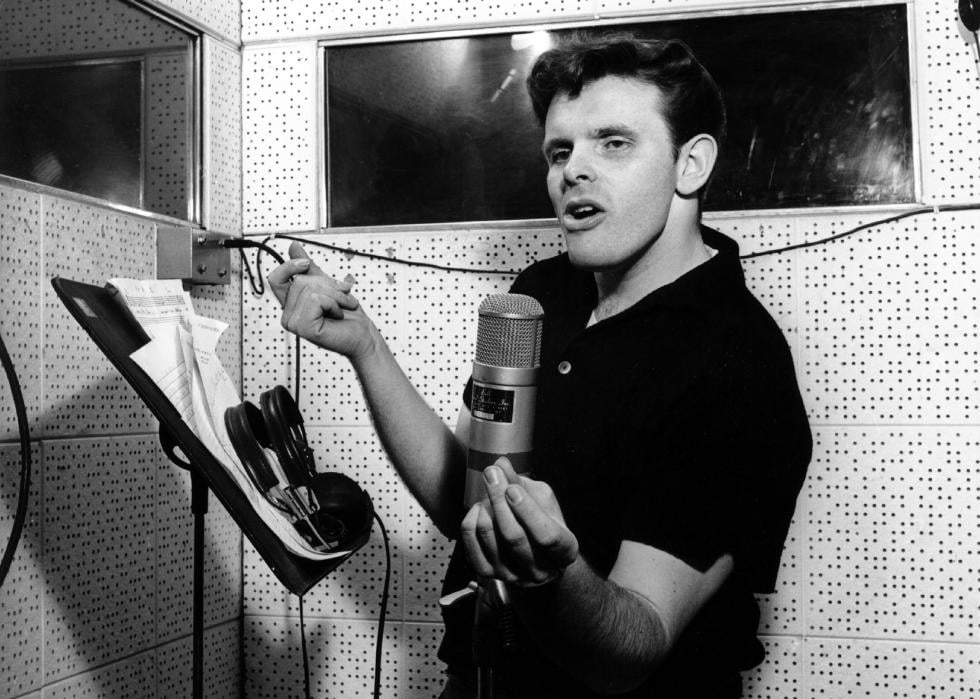
Runaway
- Artist: Del Shannon
- Date entered at #1: April 24, 1961
- Weeks at #1: 4
"Runaway" established Del Shannon as a one-hit wonder. Shannon's falsetto voice and keyboard riff make it a popular cover for bands like the Traveling Wilburys and Misfits. Collaborating with numerous musicians until he died in 1990, Shannon was posthumously inducted into the Rock & Roll Hall of Fame in 1999.
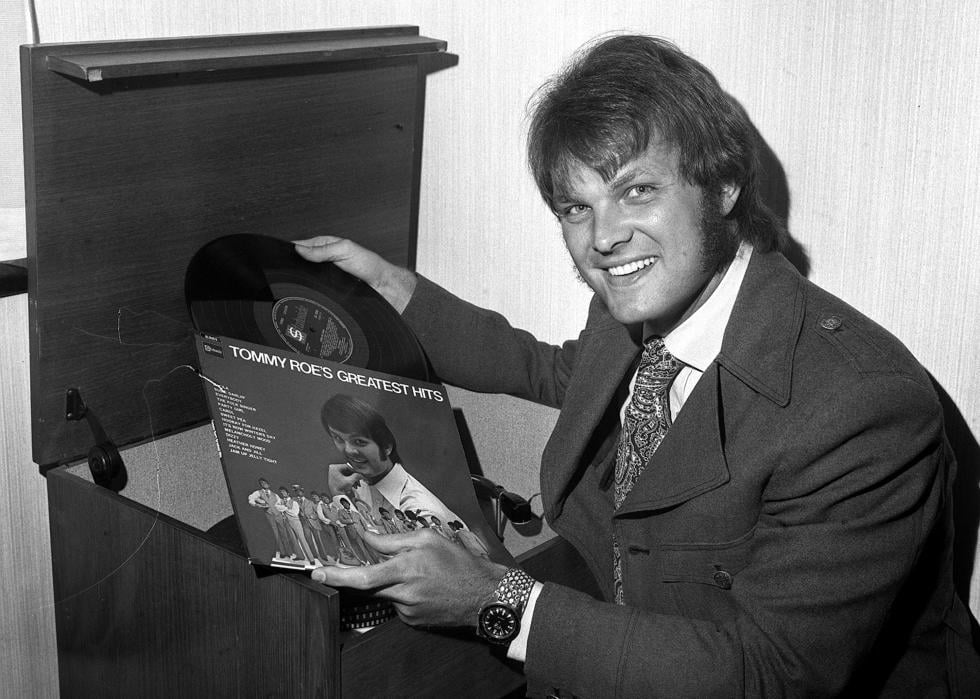
Dizzy
- Artist: Tommy Roe
- Date entered at #1: March 15, 1969
- Weeks at #1: 4
An international hit, "Dizzy" takes singer Tommy Roe's bubble pop appeal and combines it with an orchestral arrangement. It's one of the most famous songs performed by Phil Spector's Wrecking Crew. After five more hits and nearly five decades of performing, Roe announced his retirement in 2018.
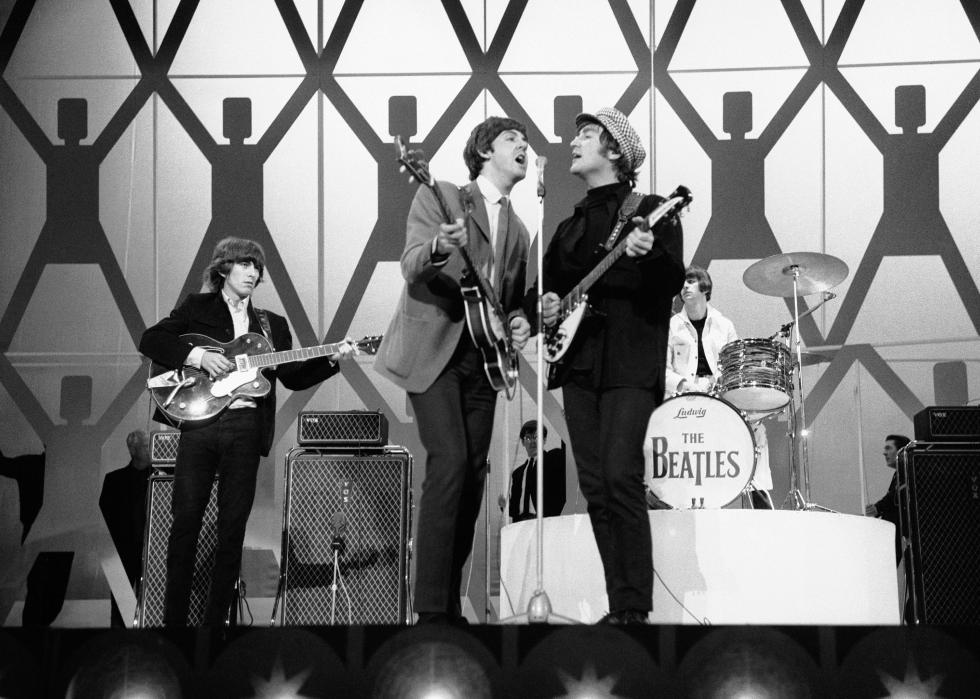
Yesterday
- Artist: The Beatles
- Date entered at #1: Oct. 9, 1965
- Weeks at #1: 4
The Beatles' song "Yesterday" from their 1965 album "Help!" showcased bassist Paul McCartney's potential as a solo artist. The song is a departure from the group's rock 'n' roll sound, opting for an acoustic guitar and string quartet arrangement. It's proved popular over time, becoming one of the most covered songs ever. In fact, there's only one song that's been covered more than "Yesterday"—the 1930s jazz record "Caravan."
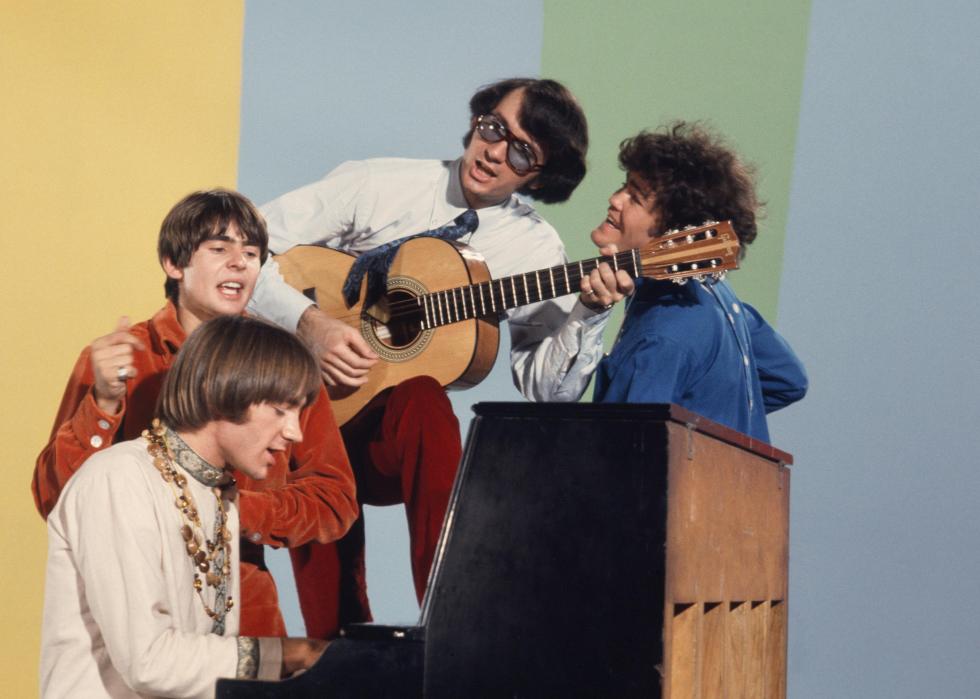
Daydream Believer
- Artist: The Monkees
- Date entered at #1: Dec. 2, 1967
- Weeks at #1: 4
An upbeat song despite singer Davy Jones' dismay in its intro, "Daydream Believer" became the Monkees' third and last #1 hit. Written by John Stewart, it was part of a song trilogy about suburban life. After a string of hits in the 1960s and a sitcom, the group broke up in the 1970s, only reuniting on occasion. As of April 2024, Micky Dolenz is The Monkees' only surviving member; he's still recording music and performing, as well as appearing on TV shows, like Hulu's "Difficult People."
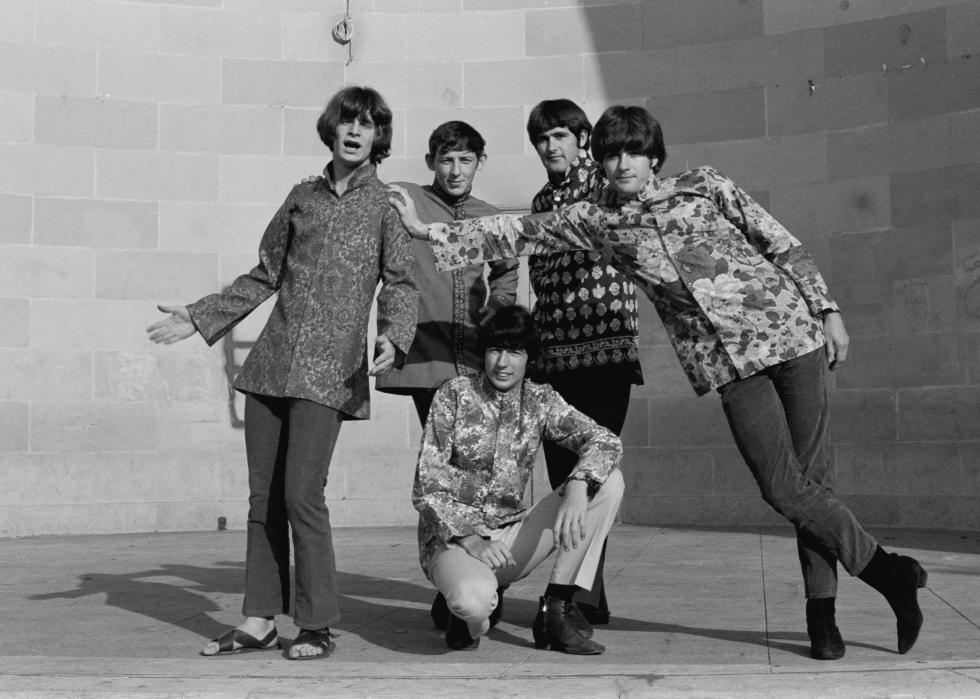
The Letter
- Artist: The Box Tops
- Date entered at #1: Sept. 23, 1967
- Weeks at #1: 4
A mix of soul and rock, "The Letter" proved the Box Tops' first and most successful single. The introduction of an airplane sound bite is one of the first instances of a sample, setting Alex Chilton apart as a songwriting icon. The group broke up in 1970. Though the original lineup is not still intact, founding members Gary Talley and Bill Cunningham reformed The Box Tops in 2015 and they continue to perform.
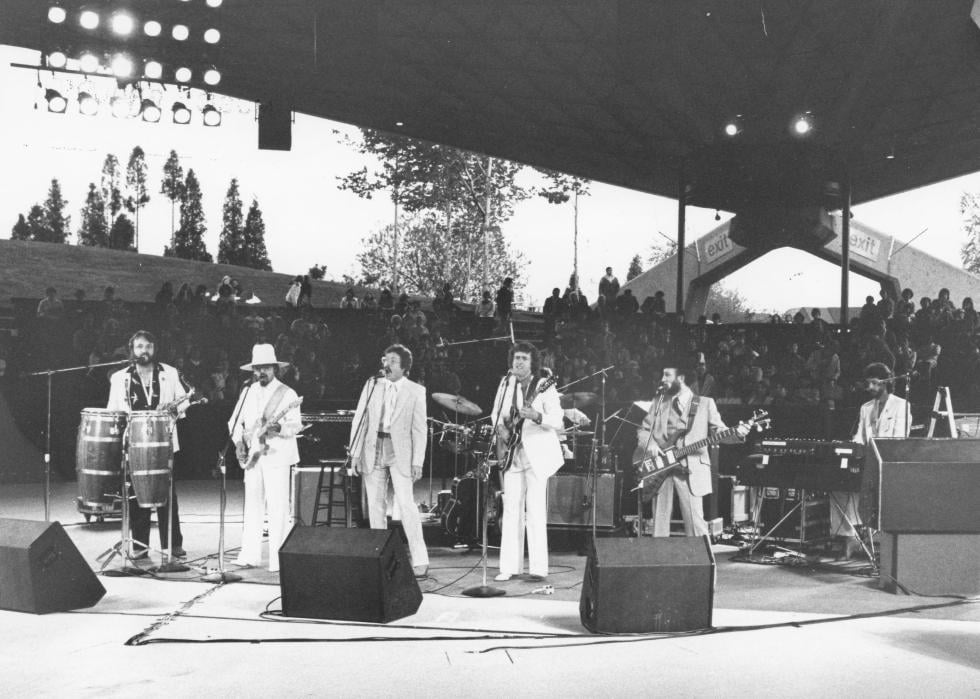
Windy
- Artist: The Association
- Date entered at #1: July 1, 1967
- Weeks at #1: 4
The Association's "Windy," released in 1967, was a watershed moment for soft rock music. Ruthann Friedman, a friend of the group, claimed she wrote it in 20 minutes—only so she could pay the rent. Though this was their last major hit, the group continues to tour.
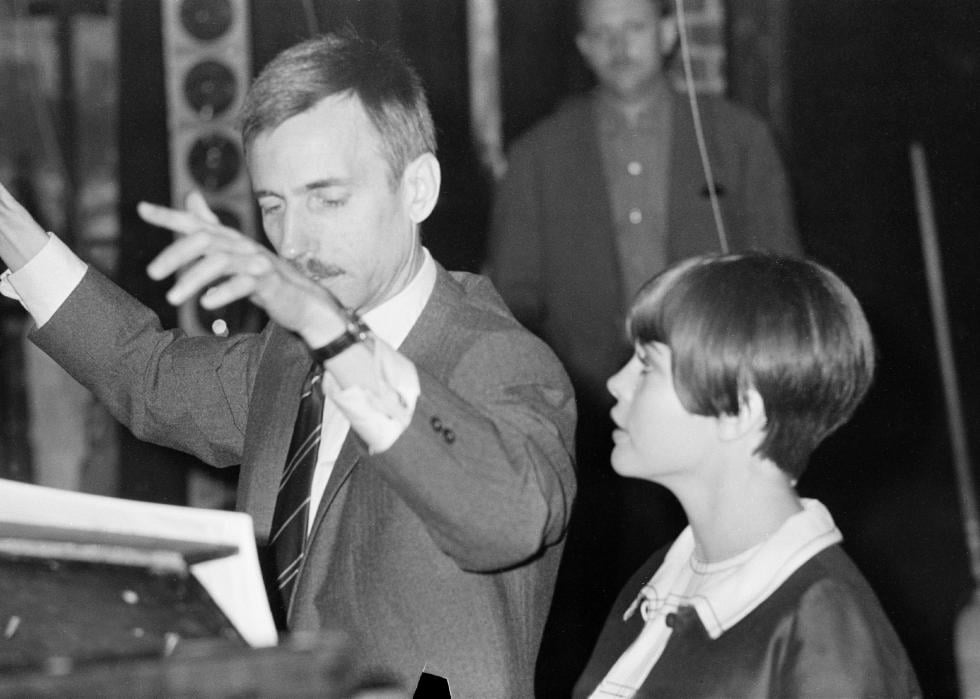
L'amour est bleu
- Artist: Paul Mauriat & His Orchestra
- Date entered at #1: Feb. 10, 1968
- Weeks at #1: 5
The French version of "Love is Blue" was originally written by André Popp and Pierre Cour. As a cover of the Vicky Leandros' hit, Paul Mauriat recorded the popular instrumental version to become the first French artist to top the Billboard Hot 100. Expanding a pop band to a more lush arrangement, it opened the door for other instrumental acts in the 1960s. Mauriat continued touring until his retirement in 1998.
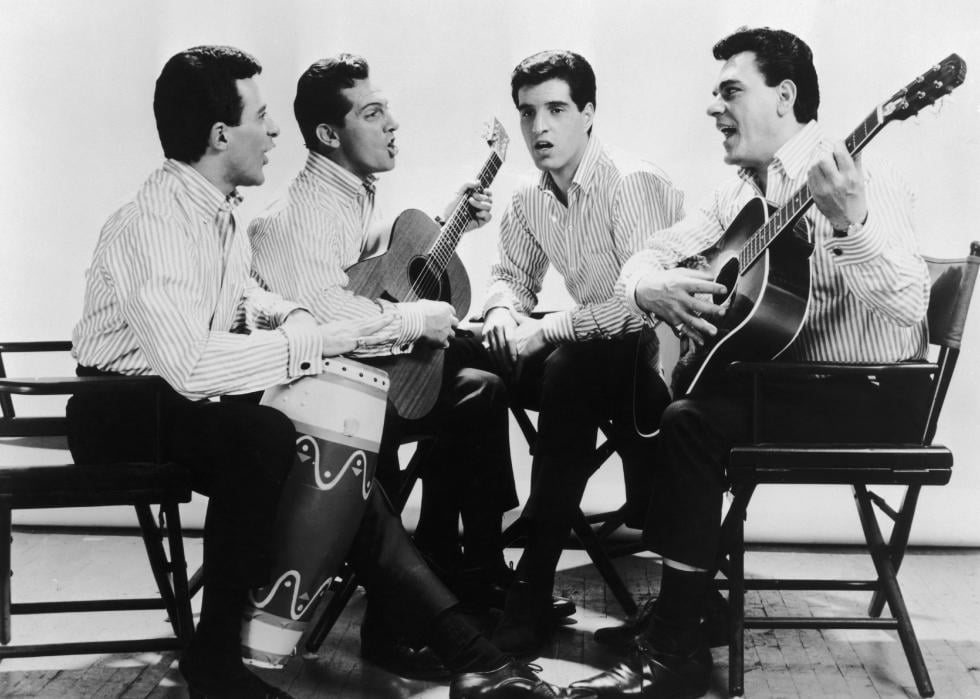
Sherry
- Artist: The Four Seasons
- Date entered at #1: Sept. 15, 1962
- Weeks at #1: 5
The Four Seasons' "Sherry" cast the Jersey boys into the limelight. Though it's unclear who group member Bob Gaudio wrote the song for, listeners can relate to the feeling of infatuation. The energetic vocals and doo-wop harmonies landed the Four Seasons in music history and launched frontman Frankie Valli into superstardom. In 2023, "Sherry" was selected for preservation in the U.S. National Recording Registry by the Library of Congress for its cultural influence.
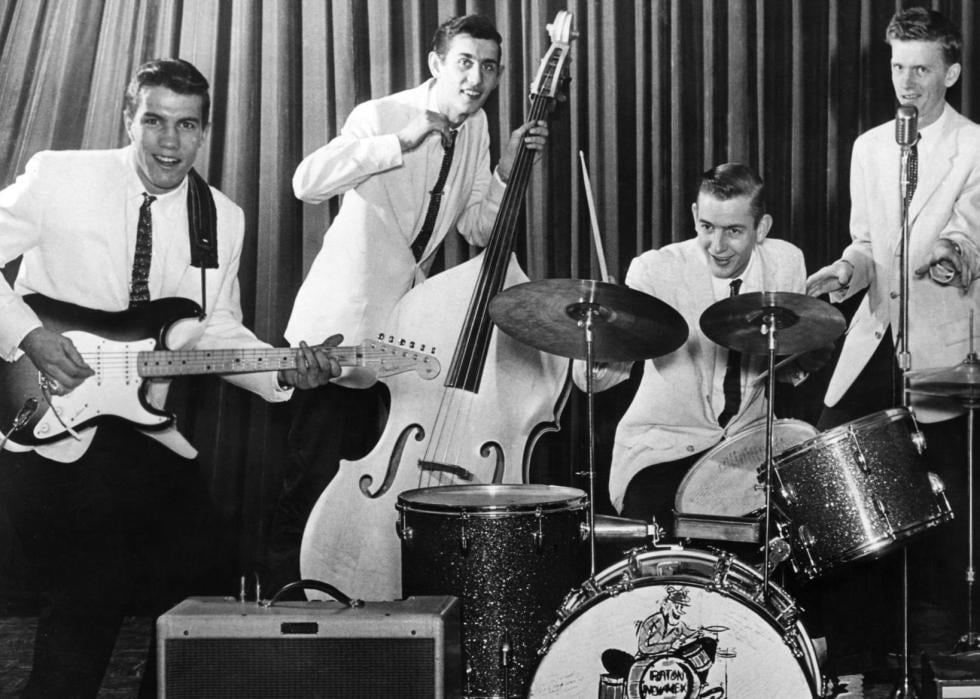
Sugar Shack
- Artist: Jimmy Gilmer and the Fireballs
- Date entered at #1: Oct. 12, 1963
- Weeks at #1: 5
Jimmy Gilmer and the Fireballs' carefree "Sugar Shack" hit the charts in 1963, becoming popular on the dance floor and the radio. Recorded in Clovis, New Mexico, Keith McCormack and his aunt Beulah Faye Voss wrote this song over breakfast. The group members became popular studio musicians for folk artists later in their careers.
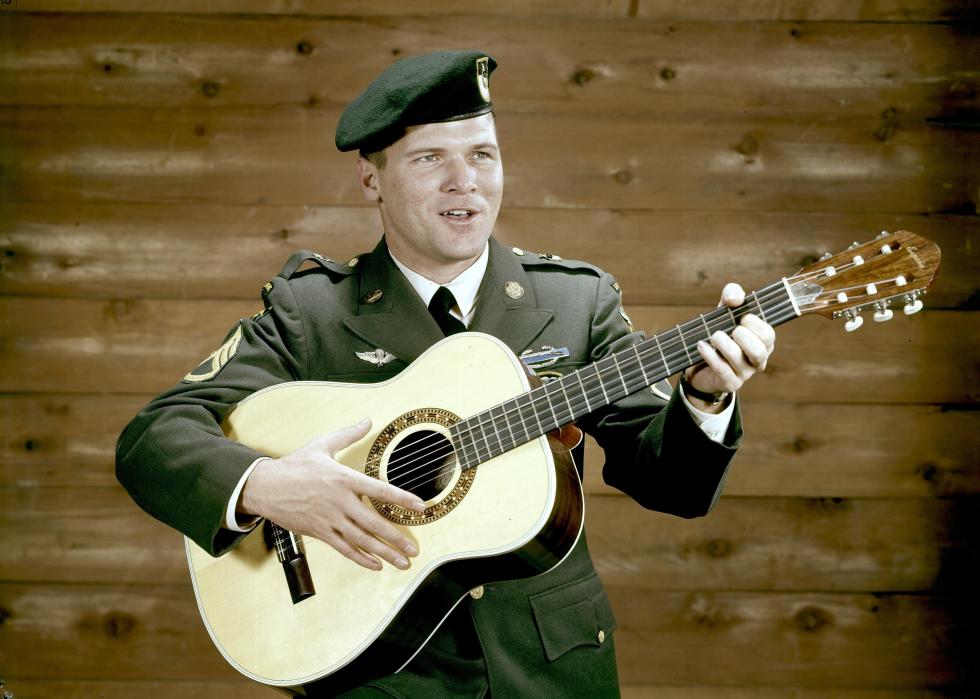
The Ballad of the Green Berets
- Artist: Barry Sadler
- Date entered at #1: March 5, 1966
- Weeks at #1: 5
This patriotic ballad proved to be a crossover hit on the easy listening and country charts, "The Ballad of the Green Berets" reflected how many felt during the decade's social and political climate. Then-Staff Sgt. Barry Sadler wrote the song about James Gabriel Jr., the first Special Forces and Native Hawaiian killed in the Vietnam War.
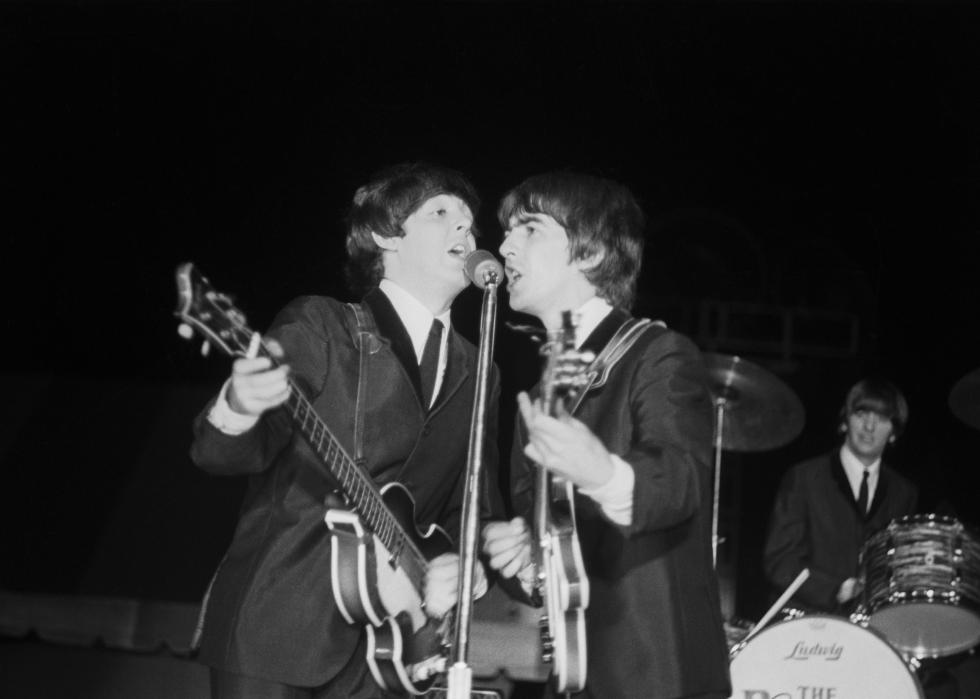
Get Back
- Artist: The Beatles with Billy Preston
- Date entered at #1: May 24, 1969
- Weeks at #1: 5
After years of experimenting with different genres, the Beatles returned to their rock 'n' roll roots with 1969's "Get Back." Collaborating with legendary musician Billy Preston, the most notable performance of this song was on the roof of the group's Apple Corps building in London, the group's last live performance.
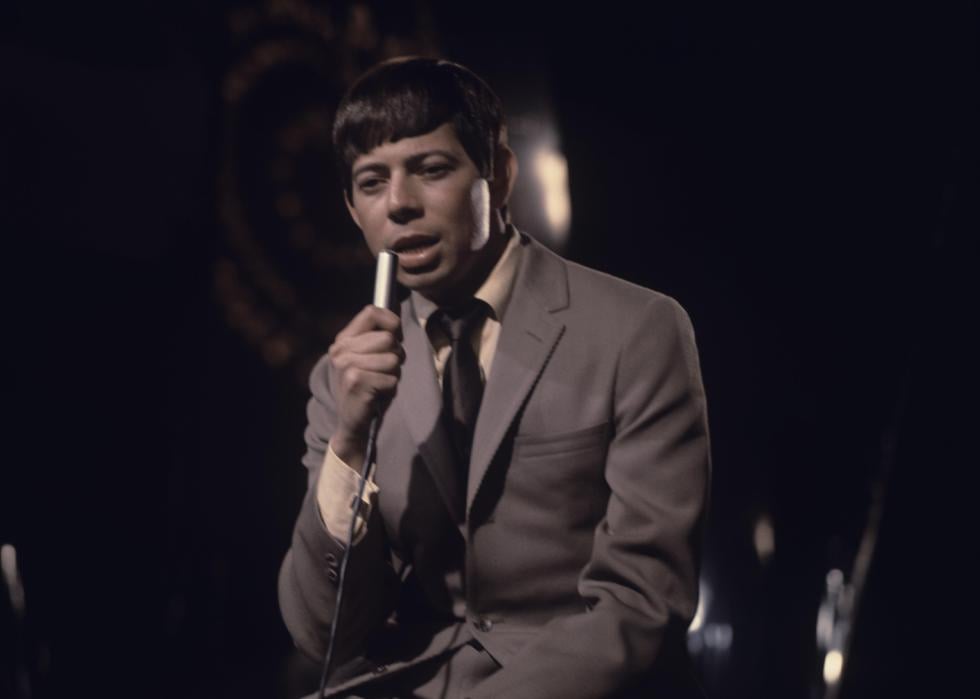
Honey
- Artist: Bobby Goldsboro
- Date entered at #1: April 13, 1968
- Weeks at #1: 5
Bobby Goldsboro's "Honey" topped the pop and country charts in 1968 with its poignant story of the narrator's loss of his wife. The power of storytelling and personal emotions made this song popular at the time, but it hasn't aged well. Rolling Stone readers voted it the second-worst song of the 1960s for its outdated love tropes.
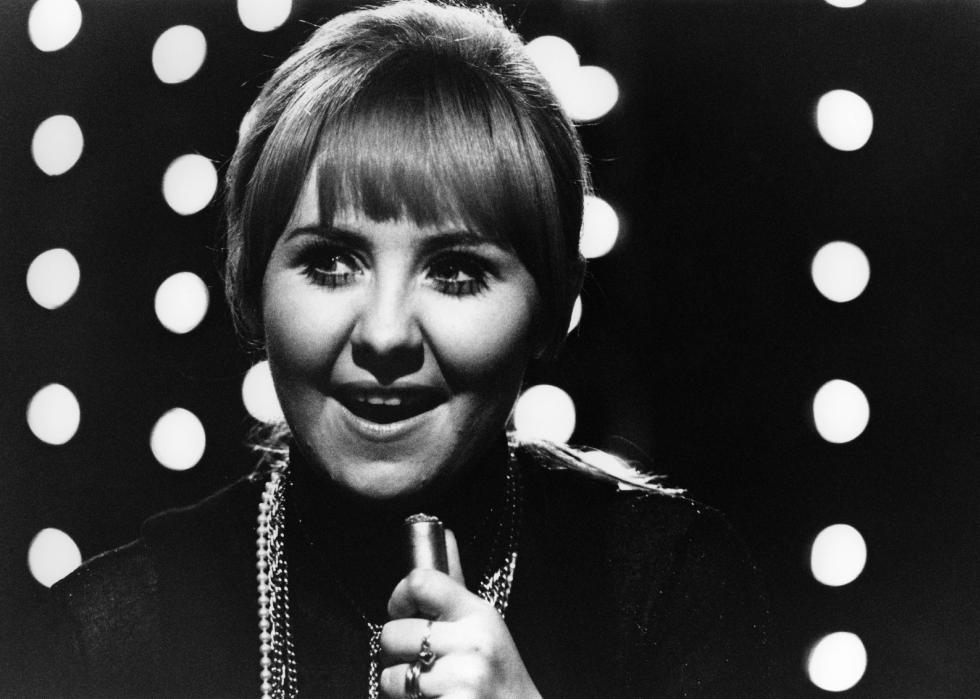
To Sir with Love
- Artist: Lulu
- Date entered at #1: Oct. 21, 1967
- Weeks at #1: 5
Featured in the film of the same name, "To Sir with Love" became the bestselling single of 1967. The uplifting and emotive vocals proved popular, with lyrics like "But how do you thank someone/ Who has taken you from crayons to perfume?" making the song a symbol for appreciating educators. Lulu has stayed in the spotlight as a musician and actor, earning her a CBE for services to music, entertainment, and charity in 2021.
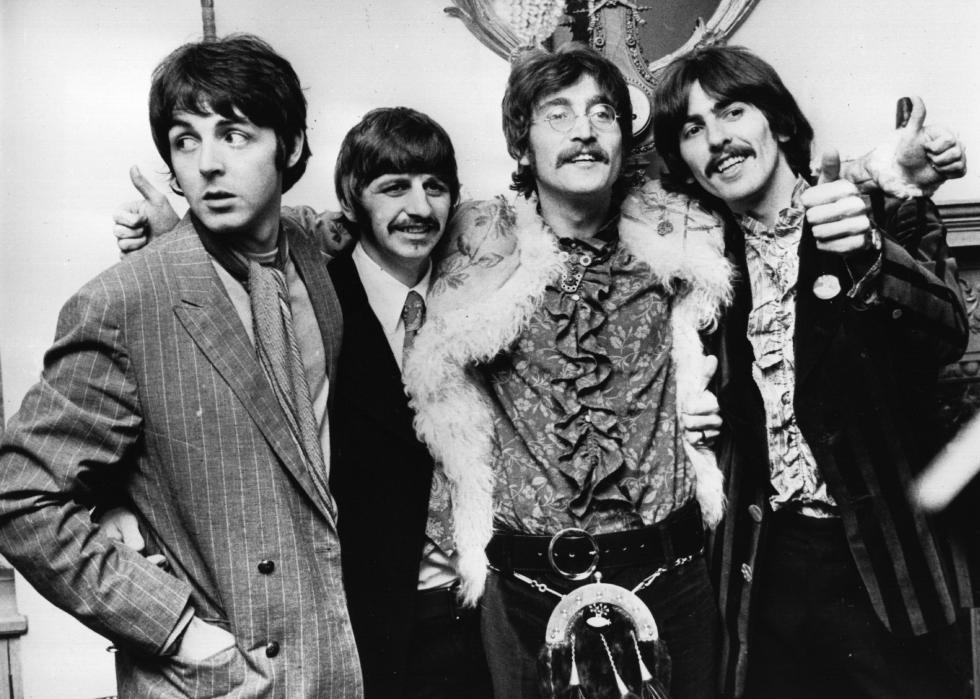
Hey Jude
- Artist: The Beatles
- Date entered at #1: Sept. 28, 1968
- Weeks at #1: 9
Released in 1968, "Hey Jude" showcased Paul McCartney's evolution as a songwriter. Written for bandmate John Lennon's son Julian, the song departs from a traditional pop structure, ending with a sing-along chorus that clocks the song at seven minutes. The themes of positivity and togetherness have turned this into a classic ballad.
Story editing by Cynthia Rebolledo. Copy editing by Lois Hince. Photo selection by Clarese Moller.
